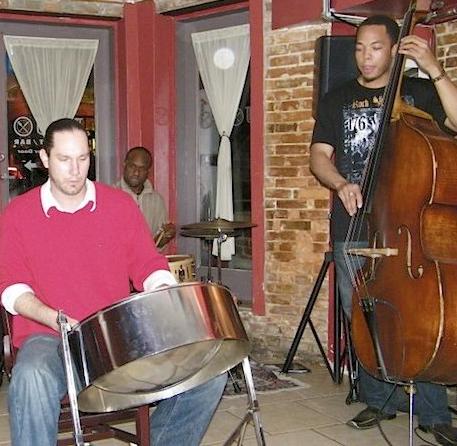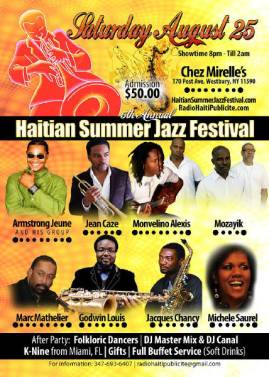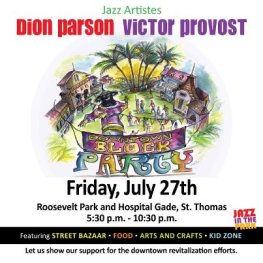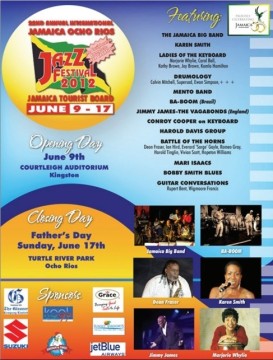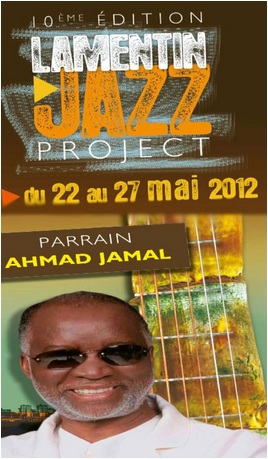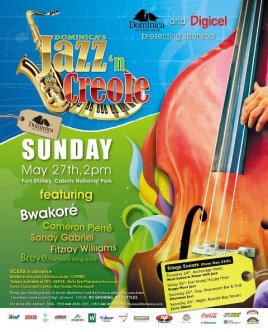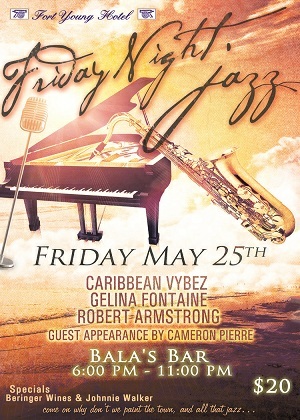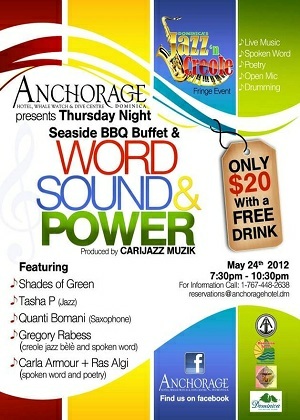Raul Midón has BVI audience in lock step at Jazz Showcase
November 19, 2010 1 Comment
The Raul Midón Jazz Showcase is the one and only Jazz concert by an international artist for the entire 16th 2010-2011 H. Lavity Stoutt Community College Performing Arts Series. This downward spiral for visiting Jazz – and Classical – artists really began last year by which time the ‘traditional’ Performing Arts Series was gutted and disposed of as new producers re-ordered its direction. And guess which aspect of the series would take a hit? Why, the Jazz of course.
So I thought, if there is no second chance for international Jazz at the H.L. Stoutt Community College auditorium in Paraquita Bay this season, then Midón had better come good.
But walking into the auditorium on the night of November 13, 2010, all I saw on the stage was a stool, a guitar stand and a microphone. That was about it! Trepidation! What about the drums? I’ve got to have some drums. Then I recalled seeing what Stanley Jordan does solo with the electric guitar – or guitars for that matter. So I relaxed because, after all, playing the acoustic guitar does not necessarily have to be one-dimensional, the strumming of strings, right?
Moments after Midón was led on to the stage by his assistant came a funkified “World Within a World,” the title track from Midón’s third release in 2007. This rendition set the tone and a vibe that convinced me right then and there that hope for a ringer was not misplaced.
I tell you, Midón is as percussive a guitarist as the best of them, utilizing the base of the right hand to cull a drum beat out of the body of the axe while slapping and finger-picking the nylon strings.
The high energy of this first offering was quickly tempered with a ballad called ‘Suddenly’ only for the temperature of the soul to be turned right back up again with “Everybody.” Midón recounted how this track came to be: “I went into the office of what was at that time called Blue Note Records. Arif Mardin (1932-2006), one of the greatest producers of all time…was sitting there. I played this song, and this is the song that got me into Blue Note Records.”
‘Sunshine, I Can Fly’ followed. That one came out of left field, I’d say.  Midón told the story of being called on by a DJ to write the lyrics to a House music composition. House Music? The Jazz muse in Midón made him consider the offer with some reservation. But the rent was coming due and he was about to get paid. Out the window went the Jazz pride; or so it seemed. Midón wrote the lyrics to what turned out to be the ‘Sunshine’ song that landed on his first recording, the self-released album “Blind to Reality in 2001.”
Midón told the story of being called on by a DJ to write the lyrics to a House music composition. House Music? The Jazz muse in Midón made him consider the offer with some reservation. But the rent was coming due and he was about to get paid. Out the window went the Jazz pride; or so it seemed. Midón wrote the lyrics to what turned out to be the ‘Sunshine’ song that landed on his first recording, the self-released album “Blind to Reality in 2001.”
As you would have noticed, I am sure, Midón was very generous with his narrations, taking the time to set up the context for his song choices. For ‘Invisible Chains’ – he called it “this reggae tune“-Midón went a step further. He actually demonstrated how Rock Steady evolved from (how did he put it?) “this cool thing” out of the Motown sound, with a bass pattern on top.
Midón revealed that it took him a while to master the beat, and another few weeks to learn to sing it. The result of that learning experience was ‘Invisible Chains.’
Raul Midón came to the Virgin Islands with a reputation as a mouth trumpeter. If you heard this and had your doubts, take my word for it; it’s for real. He did his first trumpet solo of the set on ‘Invisible Chains’ and blew the roof off the mother. Confirmation of this extraordinary talent of Midón’s was embodied in a repeat of that feat on ‘Bonnie’s Song,’ taken from his latest CD. It was loosely based, he said, on his mother’s sojourn to New Mexico where she and his father met.
Up to this point, the guitarist had been totally himself, his sound, a culmination of years of style definition on the New York scene that stood him out among the musician crowd out there. Now, it was time for him to let some influences seep into the set.
Exhibit A, the Brazilian inflected ‘Everyone Deserves A Second Chance,’ a song in which Midón aptly played the melody line while seemingly washing his hands over the strings for more rhythmic effect. Honestly, the naked eyes could not possibly follow the fingers, which were all in a blur. Am I exaggerating? Ok! Browsing through the CD booklet of the artiste’s latest album, “Synthesis” the morning after the show, I observed a photo to the back of it that was an exact representation of the that very kind of finger speed. Check it out. To be sure, that was fodder for the eyes.
As for the ears, I was certain I heard George Benson come through Midon’s vocals there for a moment. For the record, Benson made another appearance, if you will, on the very next song, ‘If I Ruled the World.’
‘Waited All My Life’ is a love song, a visceral, sentimental love song, according to Midón. However, whatever the crass emotion that was written into the lyrics was suppressed by the R&B overtones that have become synonymous with Neo-soul.
‘All Because of You’ continued in that vein, but this time, Midón made no pretense about it – he was drifting more and more towards the fringes of Jazz.
‘Expressions of Love’ was being composed for Midon’s first record when he put it in Mardin’s head at some bar in Soho where they were taking a break from recording, that it would be a good idea to get Stevie Wonder to do a collaboration on th song. Arif used his connections to make it happen – on record. Listening to Midón do the vocals on this one, I swore Stevie was all over it.
I get it, Midón must be less an imitator than he has the talent to adopt the voices of his musical influences whenever he chooses, sans mimickry.
All to soon, the Raul Midón Jazz Showcase drew to a close with ‘State of Mind,’ more or less Midon’s way of letting off some musical steam. He was not alone though. The entire audience was in lock step with him – from beginning to end.
P.S. Everyone who lives in the Woodshed knows that as much as I applaud the broadening of the Performing Arts Series, I still cannot get over the loss of quality international Jazz. So…the Virgin Islands (Jazz) Showcase featuring saxophonists Drexel Glasgow, Dalan Vanterpool, Jeremy Vanterpool and Kamau Georges had better not let down on January 08, 2011.



